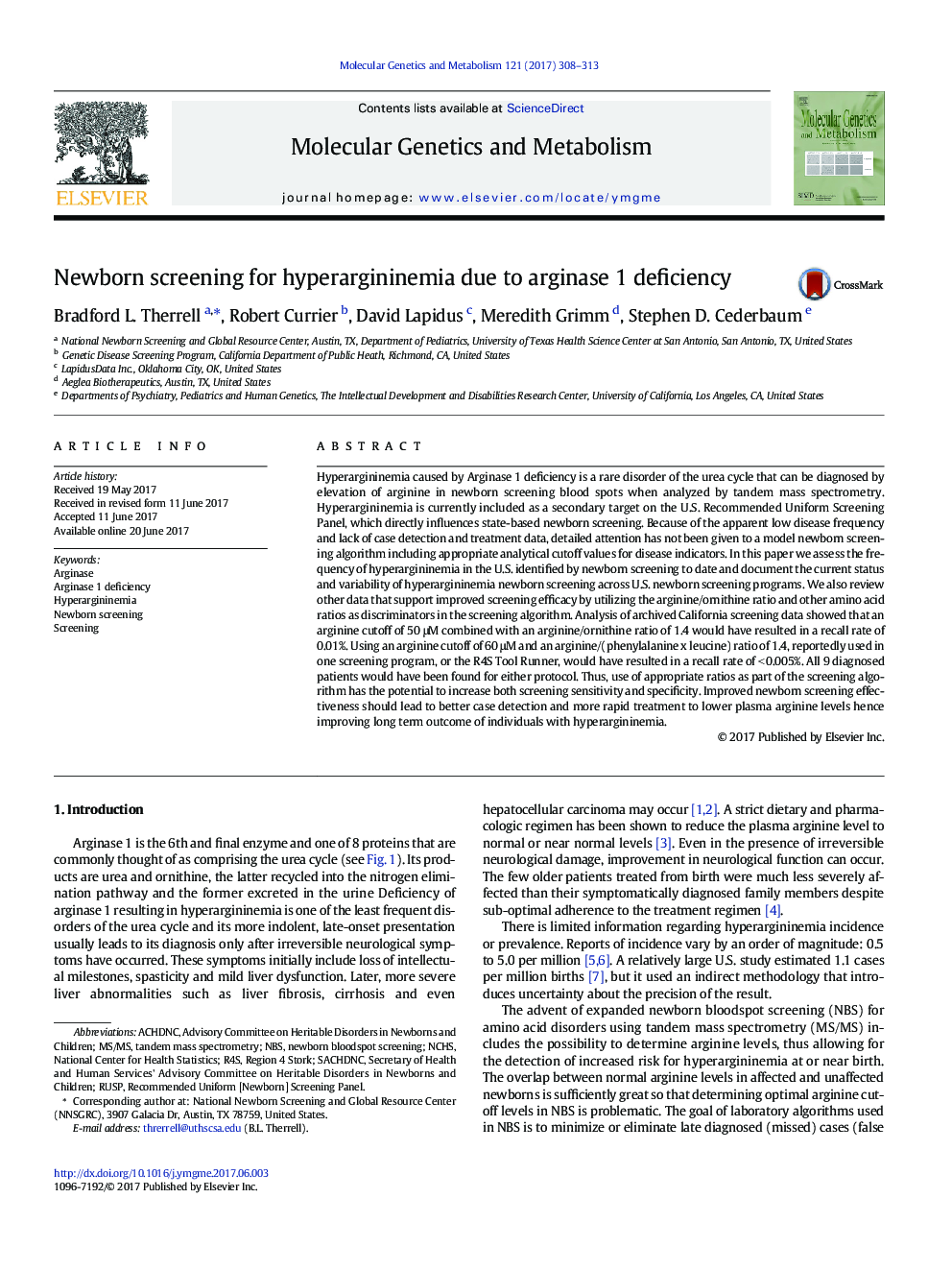| کد مقاله | کد نشریه | سال انتشار | مقاله انگلیسی | نسخه تمام متن |
|---|---|---|---|---|
| 5513931 | 1400687 | 2017 | 6 صفحه PDF | دانلود رایگان |
- Newborn screening for hyperargininemia in the U.S. began in 1999 and it is currently a secondary target on the RUSP.
- Hyperargininemia is detectable by technology used by all U.S. screening jurisdictions but is required by only 64%.
- Calculated incidence of hyperargininemia from U.S. newborn screening data to date shows a minimal incidence of 1:1.2 M.
- Screening algorithms vary, but arginine levels with select amino acid ratios can provide excellent screening specificity/sensitivity.
Hyperargininemia caused by Arginase 1 deficiency is a rare disorder of the urea cycle that can be diagnosed by elevation of arginine in newborn screening blood spots when analyzed by tandem mass spectrometry. Hyperargininemia is currently included as a secondary target on the U.S. Recommended Uniform Screening Panel, which directly influences state-based newborn screening. Because of the apparent low disease frequency and lack of case detection and treatment data, detailed attention has not been given to a model newborn screening algorithm including appropriate analytical cutoff values for disease indicators. In this paper we assess the frequency of hyperargininemia in the U.S. identified by newborn screening to date and document the current status and variability of hyperargininemia newborn screening across U.S. newborn screening programs. We also review other data that support improved screening efficacy by utilizing the arginine/ornithine ratio and other amino acid ratios as discriminators in the screening algorithm. Analysis of archived California screening data showed that an arginine cutoff of 50 μM combined with an arginine/ornithine ratio of 1.4 would have resulted in a recall rate of 0.01%. Using an arginine cutoff of 60 μM and an arginine/(phenylalanine x leucine) ratio of 1.4, reportedly used in one screening program, or the R4S Tool Runner, would have resulted in a recall rate of < 0.005%. All 9 diagnosed patients would have been found for either protocol. Thus, use of appropriate ratios as part of the screening algorithm has the potential to increase both screening sensitivity and specificity. Improved newborn screening effectiveness should lead to better case detection and more rapid treatment to lower plasma arginine levels hence improving long term outcome of individuals with hyperargininemia.
Journal: Molecular Genetics and Metabolism - Volume 121, Issue 4, August 2017, Pages 308-313
